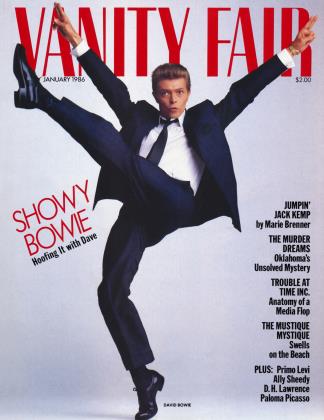Sign In to Your Account
Subscribers have complete access to the archive.
Sign In Not a Subscriber?Join NowDueling Fox Hunts
An outlaw pack rides into Old Chatham
TOM Martin thought the Old Chatham fox hunt was going to the dogs. So he did something about it—he started his own. As a result, the patrician Masters of Foxhounds Association is caught in the middle of a flap. The MFHA is a national organization—perhaps America's most exclusive club—whose members include Strawbridges, Hearsts, Phippses, and Firestones. Each January, they take time out from being in the Social Register, the Forbes Four Hundred, and Baily's Hunting Directory to pose for a formal portrait in the Union Club in New York. This year, the talk will be about Tom Martin.
' 'The old hunt was a terminal case," says Martin about the Old Chatham Hunt, which has ridden to hounds on the farms and fields of Columbia County, north of New York City, since 1926. "It was down to thirty members, and it wouldn't let you join unless you were the 'right sort.' The fences were falling down, and the trails were overgrown."
A man of action, Martin financed his own rival pack of foxhounds, the Taconic. By contrast, it already boasts 115 subscribers in its second year, and, says Martin, "all we care is whether or not you can ride and like fox hunting." But the competition cared a bit more. Foul! cried Maria Lull, the very proper MFH of the Old Chatham Hunt. She implored the association to declare Martin and his upstart pack outlaws.
Martin resembles neither a master of foxhounds nor an outlaw , but he has two credentials to lean on in his feud with the equestrian establishment: land and money. A onetime Wall Streeter, he has increased his 137 "weekend" acres in Old Chatham to 1,100. In 1973, he started selling limited partnerships in Thoroughbred broodmares to other finance types who wanted either a tax shelter or the glamour of owning racehorses. Today, his breeding farm, Kinderhill, owns 110 broodmares and has "shares" in fifty-three stallions, assets worth $82 million.
Renegade though it may be, the Taconic Hunt does honor most of the traditions of English fox hunting—the stirrup cups and hunt breakfasts, the blessing of the hounds by a minister on opening day. Its foxhounds don't have tails, they have "stems"; they don't bark, but "speak"; and the Taconic's forty-four foxhounds (which are never mere dogs) would be computed as ' 'twenty-two couple. ' '
But Martin is hardly a traditionalist. Most masters of foxhounds hang English hunting prints on their walls. Martin's home at Kinderhill is full of Impressionist paintings. "If I want to see horses," he quips, "I look out the window." He discusses the hunt in terms of "market" and "product," sounding more Madison Avenue than MFHA. Knowing that the Taconic Hunt would not be included in the MFHA's equestrian-magazine listings this past fall, Martin simply bought ad space opposite the list.
By all accounts, the Taconic Hunt has been an enormous popular success. Members range from local farmers and veterinarians to bankers. But the formidable Mrs. Lull is not appeased. The Chatham, she says, is the recognized hunt; Martin's is "an outlaw pack. "
Don Rosendale
 View Full Issue
View Full Issue












Subscribers have complete access to the archive.
Sign In Not a Subscriber?Join Now